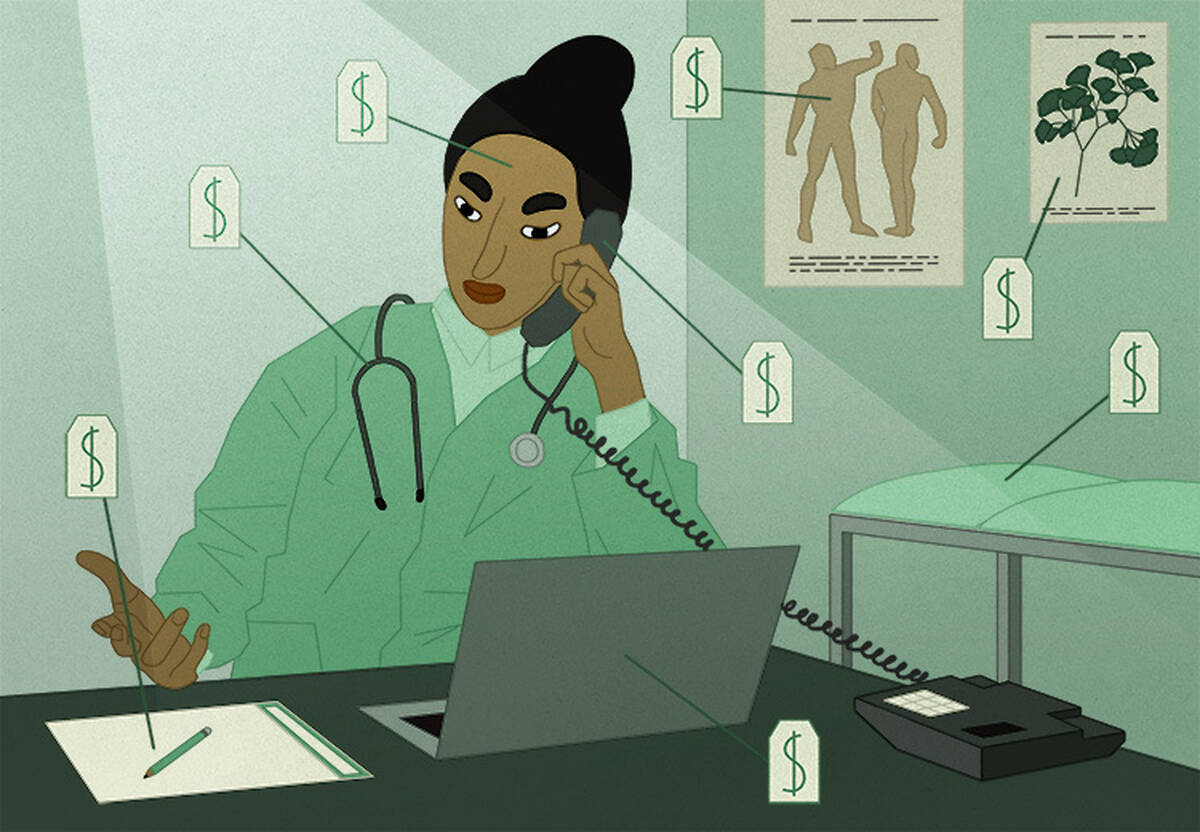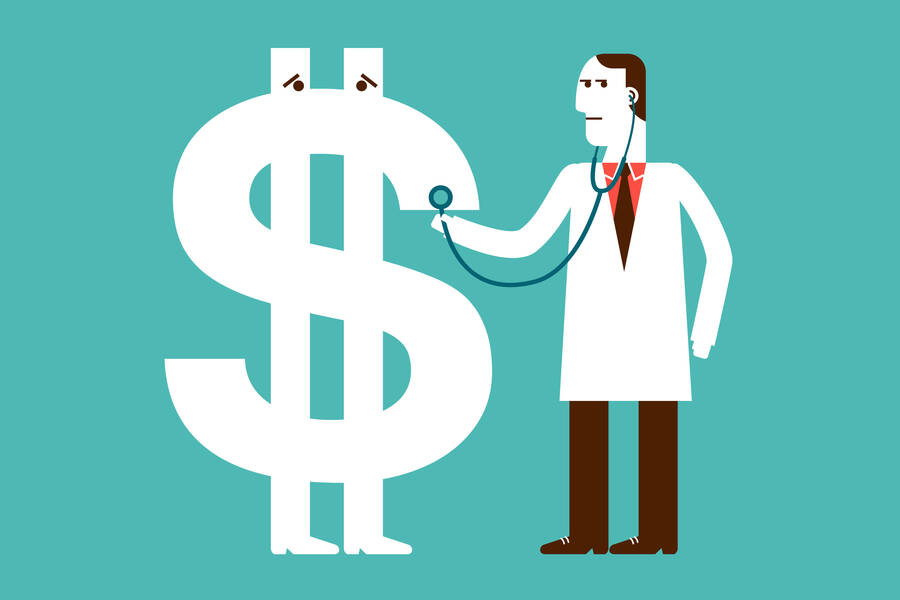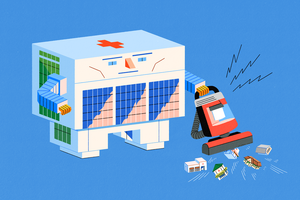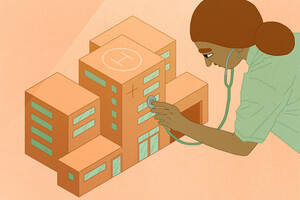Healthcare Jan 4, 2018
Will People Price Shop for Healthcare?
A new study says yes, but only if the prices are easy to understand.

Lisa Röper
For any medical procedure, from a minor checkup to major surgery, there can be significant uncertainty about a key component: the price.
Indeed, for healthcare, unlike most products and services, we typically don’t know the exact price we will have to pay until after we receive a bill.
But what if there was greater transparency about the exact out-of-pocket price we would pay for a given procedure and how much that price varies across hospitals or providers? Would that change the providers we choose?
The answer is of interest to policymakers, whose goal is to encourage consumers to be more price-sensitive, saving money for themselves and reducing spending in the system overall.
“There’s a decades-long debate in healthcare about whether you can actually get people to shop on price,” says Elena Prager, an assistant professor of strategy at Kellogg. “We tend to view medical services as a different kind of product where price may not matter much.”
In a new study, Prager investigates whether consumers respond to simplified price information in choosing healthcare providers.
She finds that, indeed, price shopping in healthcare is possible—but it involves presenting consumers with price information in a much more simplified way than insurers typically do.
Do Healthcare Consumers Price Shop?
Think about your own healthcare bills for a moment. Do the words “simple” or “clear” immediately come to mind? Likely not.
“Even when people get an explanation of benefits from insurers, pricing can still be pretty opaque,” Prager says.
This is a problem because policymakers and insurers are trying to motivate consumers to understand the cost–benefit trade-offs of their healthcare decisions, as well as the value they are getting for the money spent—both out of their own pockets and from the balance sheets of insurers. But in most cases people lack the information to make informed decisions.
“On one hand, we’re asking for people to pay for more and more of their care” due to, for example, increasing deductibles and the rising cost of healthcare, Prager says. “But on the other, we’re not giving them the right tools to make good decisions about those large monetary amounts. So it’s important to understand whether it’s even possible to design effective healthcare price-information systems.”
Much of the earlier research on how to encourage price shopping in healthcare often focused on high-deductible health insurance plans.
“Even for care that serious, people are willing to trade off hospital prestige or distance to their house in order to save money.”
The logic was simple: if consumers have to cover a larger amount of their care—based on deductibles that could run well into the thousands of dollars before insurance coverage kicks in—they would be more price-sensitive when choosing services or providers.
But findings showed people had little sensitivity to price even when using these high-deductible plans.
“That’s because high-deductible insurance only solves one piece of the price-sensitivity problem by giving people more skin in the game,” Prager says. “These plans still don’t give enrollees sufficient price information. So people still have to figure out what the actual price they pay will be.”
That may mean finding and adding up prices from multiple medical areas and providers, even when considering only a single procedure. There may be different bills from the hospital and from the doctors working at the hospital, and from anesthesiology, surgery, the hospital pharmacy, and more. The information is often difficult to find, if not impossible.
The Simpler, the Better
Prager’s research used unusually transparent data from an insurance system in Massachusetts.
The study examined private health insurance claims from multiple insurers from 2009 to 2012. But importantly for the research, all these insurers gave consumers very clear information on cost.
Additionally, in many of the health plans, these insurers group hospitals into “tiers” based on price. A hospital’s tier determines consumers’ out-of-pocket payment for a given procedure at that hospital.
“For any procedure, such as a knee replacement,” Prager said, “people on these plans could look at insurer-provided documentation and on a single page see the price menu for all hospitals in the state, by tier—first, second, or third—and exactly what their out-of-pocket price will be. And it’s a set dollar amount, not 10 percent or 20 percent or the total cost. Just $300 or $700 or whatever, end of story.”
In some health plans, the difference in cost from one tier to another was substantial; for others, there was little to no price differential; and others simply had the same copay for all hospitals without using tiers. This allowed Prager to compare how consumers responded to the option to price shop in a very transparent system.
The data studied included the insurance plans of over 200,000 enrollees and dependents, the out-of-pocket prices they saw while making treatment decisions, and how much they and the insurers paid for procedures. The researchers focused on inpatient services—such as major surgery or delivering a baby.
The Power of Presentation
Prager found that people in the study did indeed opt for lower-priced medical services when presented with clear, simple price information.
For example, she modeled how the same patient would behave when enrolled in different types of plans—those with large cost differences between hospitals and those with none. She found that total spending per hospital stay fell by 1.3 percent when consumers were presented with cost differences.
Prager predicts that providers in the lowest-priced tier would gain about 53 percent in patient volume over three years due to price shopping.
“People weren’t sure price shopping in healthcare was even possible,” she says. “These findings show that it is.”
Indeed, people in the study were making price-based decisions about inpatient treatment, the type of higher-stakes interventions that required overnight stays.
“Even for care that serious,” Prager says, “people are willing to trade off hospital prestige or distance to their house in order to save money. So we might expect to see even greater price-shopping behavior for less serious care.”
Still, it takes an extremely simple approach to presenting price information to help people make healthcare decisions. “We haven’t been good at providing that in the US system,” Prager says.
Greater availability of simple healthcare price information would be good news for consumers and insurers alike. Patients save out-of-pocket costs by choosing lower-priced services, and insurers can save even more.
“Hospitals can differ by thousands of dollars for a given procedure,” Prager says, “and insurer savings can be many multiples of what consumers save when choosing a lower-priced option. Though not a guarantee, that might lower insurance premiums in the long run.”
What About Providers?
What are the implications of Prager’s findings for hospitals, physicians, and other providers?
“The level of enthusiasm providers have about these results will differ by where they are currently in the price distribution,” Prager says. She breaks down providers into three broad categories similar to the tiers insurers use.
Low-priced providers should be “thrilled” about price shopping, she suggests, because they can keep prices where they are and enjoy more volume because price-sensitive consumers will pick them when presented with clear price information.
Medium-priced providers are more likely to lose patient volume to lower-priced competitors because consumers will choose price over reputation or other factors such as proximity to home. “That will siphon off some volume from providers priced in the middle,” Prager says, “but they can try to negotiate lower rates with insurers in subsequent years to get into a lower tier.”
High-priced, highly desirable providers “won’t really care about price shopping,” Prager says, “because patients are willing to pay whatever it takes to get their care there.” She points to the Harvard-affiliated academic medical centers in the study as examples. These providers have such strong reputations that fewer consumers are willing to switch away from them, even if the price difference is stark. This means less savings for consumers and, especially, insurers.
The good news for patients and insurers is that the number of tiered insurance networks that have easier access to simple price information has grown in the last decade or so.
Over 10 percent of people enrolled in the Affordable Care Act exchange plans are in plans that are structured this way, Prager says, and a growing number of large employer-sponsored plans are, too. At the same time, many other insurers remain overly reliant on complex pricing tools, typically online, through which enrollees can search for providers and prices by procedure and zip code—but prices are still presented in a complicated way.
“Those complex tools are the darling of the industry,” Prager says, “but they don’t always work as well as hoped because they leave a lot of uncertainty about pricing. Instead, providing a simple menu of tiered-network options and prices has serious advantages that should be even more highlighted going forward.”



